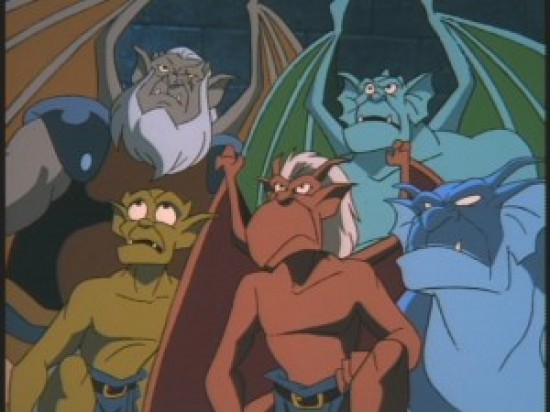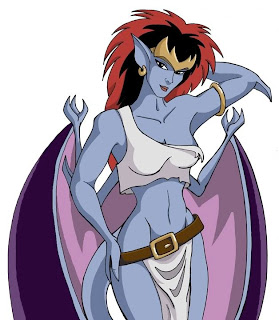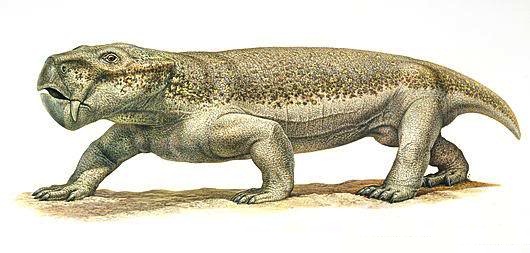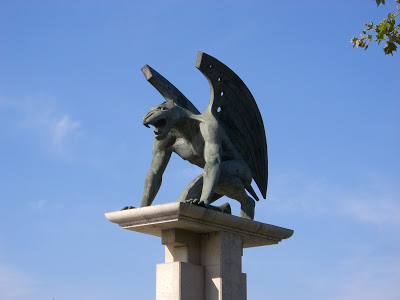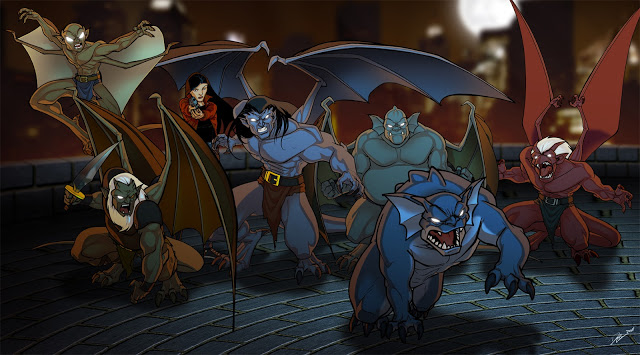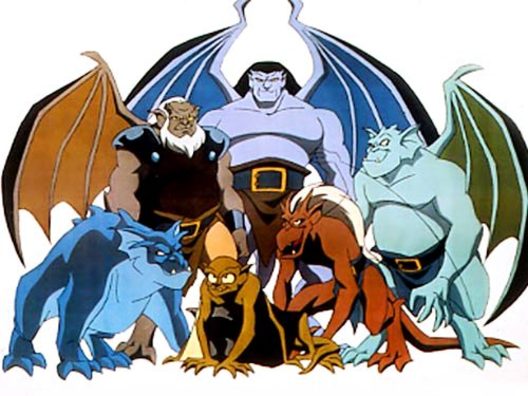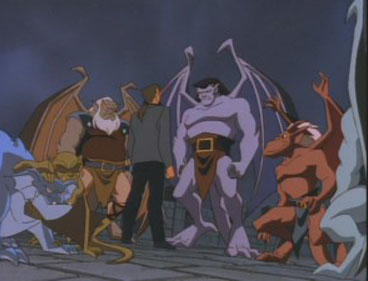One of the best shows to air in the weekday afternoons my youth had to be Disney’s Gargoyles.
Created by Greg Weisman, it was extremely detailed, well thought out and planned in full beyond anything the show could truly contain.
He does that.
Even on his most recent show, Young Justice, the series bible is 271 pages long and growing. Which probably has more thought and effort put into it than the current “New 52” at DC Comics.
Gargoyles has that level of detail, and it really shows, though for the Gargoyles themselves, not everything quite works out as he planned.
Symbolism
The Gargoyles in the series are, symbolically, best seen as a metaphor for race.
Prejudice and out and out genocide were common themes that cropped up in the series, with the lead character the survivors of a massacre and the number of gargoyles around the world reduced to numbers that make Panda’s look plentiful.
Their fearsome appearance, usually connected to medieval demons or other monsters, causes distrust in humans and, to paraphrase Yoda, fear lead to anger, anger lead to hate and hate lead to suffering.
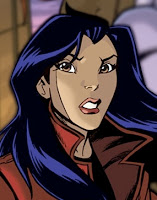 |
| Elisa Maza |
To reinforce this on a subtle level, the lead heroine of the series, Elisa Maza, is half African American, half Native American: two groups in the United States that really got the short end of the stick.
Part of their plight, however, has an interesting parallel to the only other major human species Homo sapiens encountered: the Neanderthals.
Like the Gargoyles, they were more specialized and were driven to extinction in part due to competition with humans.
It brings up the wonderful question off what humans do when seeing other sentient species for the first time and how such encounters play out.
Biology
I should start this by noting that this is based on my own reading of the series and not an official canonical reading of the series.
Greg put a lot off work into it, but I can (mostly) work only from what’s put on screen. He still answers questions to this day about it, which is awesome. But, he’s not a scientist. Heck, neither am I. I am only a science enthusiast, but I want to approach it with fresh-ish eyes and see what the series ‘tells’ us. Though his notes on it are certainly considered simply because of how detailed he goes with it.
Before delving into the strange abilities and such of the Gargoyles, there’s one thing that I need to say right off the bat. A lot of people assume that the Gargoyles and their relatives (dubbed “Gargates” by Greg) appeared first on the continent of Pangaea.
Many assumed that they were thus the descendants of dinosaurs, but there’s a little wrinkle to it. Well, two actually.
No, not those things, but close.
It’s the hips and the chest. The hair also bugs me, but if they did have saurian lineages, they feathers of flightless birds could easily simulate their ‘hair’. And some Gargoyles seen in South America did have feathers, so that holds out at least.
The hips are problem one. Dinosaurs and their relatives have a distinct wheel joint for a hip. The gargoyles, however, possess a more human-like hip structure, as they sway far too much as they walk and their hips are far too broad.
The big problem, however, is in the females and their . . . assets.
Mammary glands like that are unique to mammals. They derived from sweat glands that early proto-mammals (Therapsids) developed. Yes really. Milk was once sweat. Before the development of the nipple, it was just licked off the skin.
Isn’t nature beautiful?
So this places the Gargates as an offshoot of Therapsid reptiles/proto-mammals.
Things like Cynognathus and Gorgonops. Things we are derived from overall. This makes them, taxonomically, close to modern mammals, but overall, they are distinct enough to be their own class.
Like Therapsid reptiles, Gargoyles lay eggs and breed incredibly slowly, only being able to lay an egg every 20 years, which themselves take 10 years to hatch.
That’s a distinct evolutionary disadvantage, but would certainly allow them to survive lean times far easier than other species. The whole “Turns to stone at sunrise and returns at sunset” is the real “Gargate” trait and despite it being technically an ‘organic stone-like substance’ rather than true stone, that it suffuses their entire body forces me to conclude . . . that it’s magical in nature.
If it was just a shell of stone or stone-like material, I could probably work a way around it, linking it to the mucus membranes parrot fish sleep in. But no, they become stone through and through. Therefore, I just throw my hands up and say “a wizard did it!”
After all, one did cast a spell to allow Gargoyles to turn their clothes into “stone” as well rather than their clothes being shredded when they change back and appear to ‘burst’ from the shell.
No, really. That’s the explanation. I love fantasy some times.
Though the Gargoyles are apparently the second oldest of the races in the series (the others being humans, Fae/Oberon’s Children and a mysterious ancient race that was never named and only hinted at), so it could just have been a naturally developed magic.
Odd to think of, but if magic is a fundamental force in the universe, a species that can take advantage of it, however slightly, would have a distinct advantage over competing species.
Regardless, turning into stone is a great defense, especially if once considers all the foul stuff one could put in a shell or, in this case, turning into an organic stone-like substance (likely with a carbon base).
Because they turn to stone and basically ‘lock up’ for half their lives, they ‘live’ for twice as long as humans and similar animals, and would certainly explain (or exacerbate) their slow breeding process. It lets them live for up to 200 years or so, but still, a heavy cost. One odd aspect of their state is that they use it to photosynthesize. This probably means that they have an algae or similar simple plant living inside their bodies, akin to modern Coral. How it manages to photosynthesize through stone, I couldn’t guess. It may rise to the surface when that happens. This is reinforced by two things – their glowing eyes and the presence of a glowing algae-like plant/fungus thing in their rookery (where they lay their eggs), which apparently serves as an early meal for the infants.
Well, it’s either that or they manage to turn their bodies into huge solar power cells/collectors while in stone sleep. Whichever you feel is less fantastic.
So we have a way for the stuff to get inside the Gargoyles, but what of the glowing eyes? Well, a lot of algae are bioluminescent. That means they glow when stimulated properly. The Gargoyles can apparently control this agitation, but it also reacts to high levels of stress. Unlike most bioluminescence, it is bright enough to act in part as a flashlight.
The gargoyles have thick skin and are likely warm-blooded or at least somewhere close to it. That means that they keep their bodies warm in cold weather. Most varieties of gargoyles seen have some basic resistance to cold weather, possibly though a fat layer like blubber.
But the biggest thing about them is simply how varied they are.
The Gargoyles of Scotland are the core of the series and appear to the most primitive. Even among them, some have human faces, others long snouts. The number of horns, color of their skin and even the shape of their wings varies greatly within a single population. It’s almost unbelievable.
Dogs are a species (Canis lupis familiarus) are extremely varied, with many different breeds amongst them.
And by many, I mean like 400 to 600 different breeds.
However, if allowed to breed on their own, they normalize into something akin to a dingo.
That doesn’t appear to happen in Gargoyles, but they have that same level of variety. Perhaps to compensate for their low breeding rates, the have a high mutation rate.
That it doesn’t produce horrific freaks on a regular basis is probably more magical than the whole ‘organic stone like substance transformation’ thing.




































































































